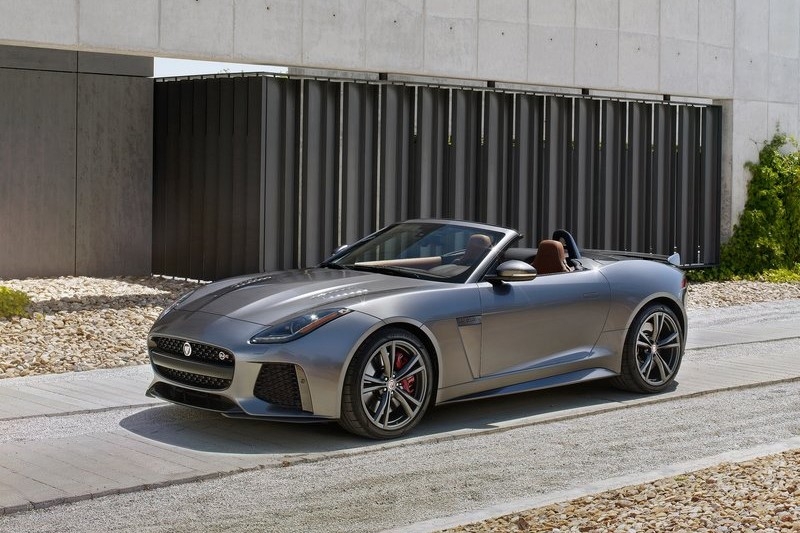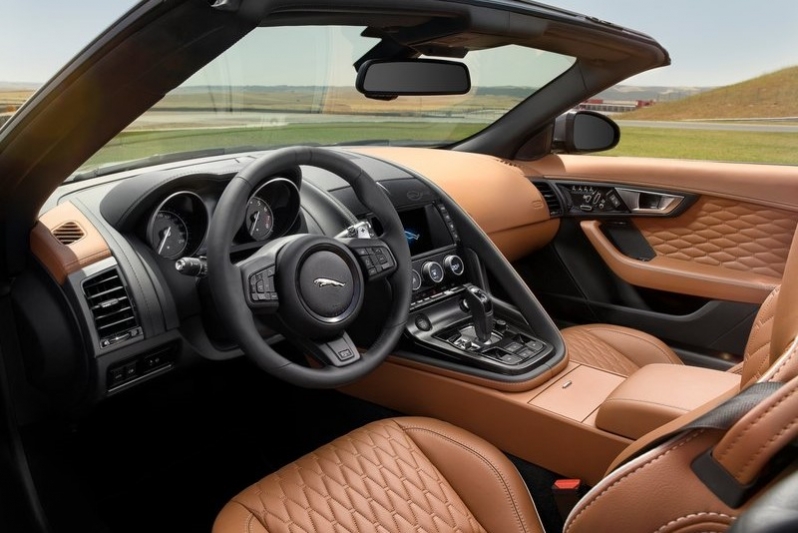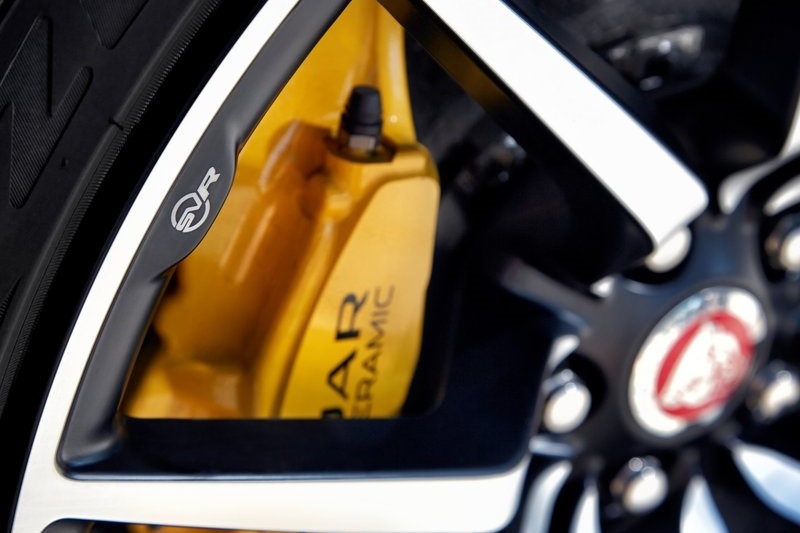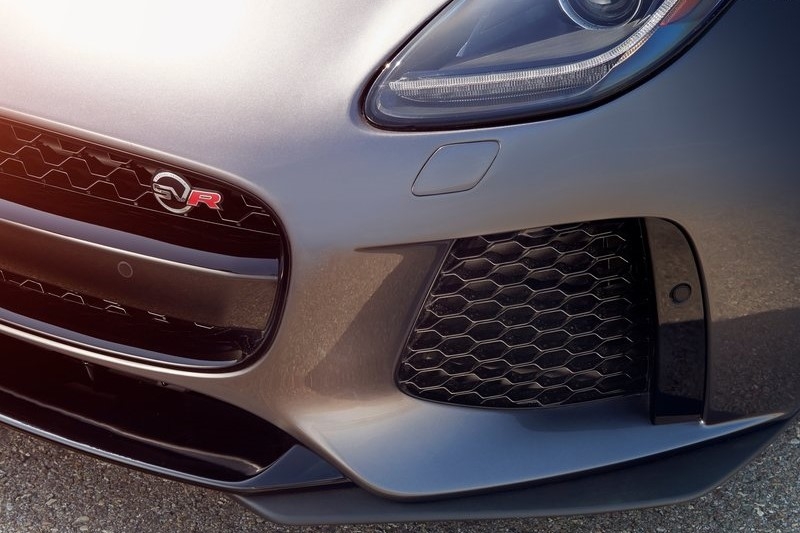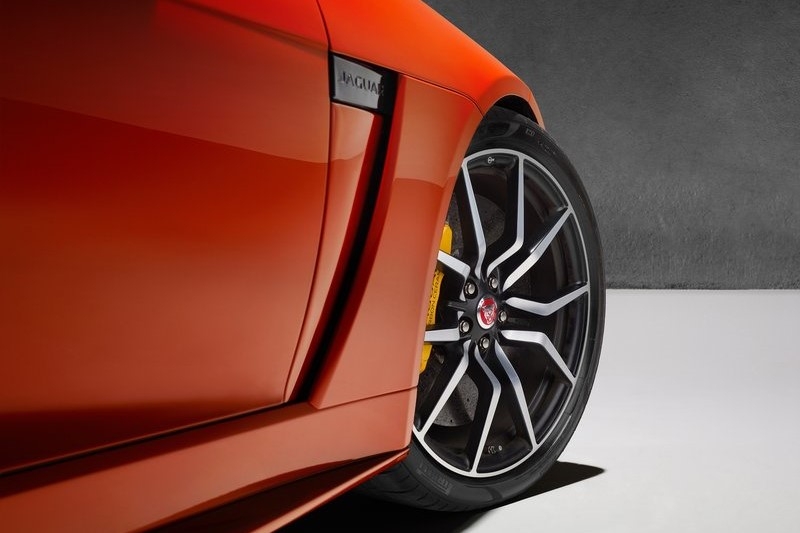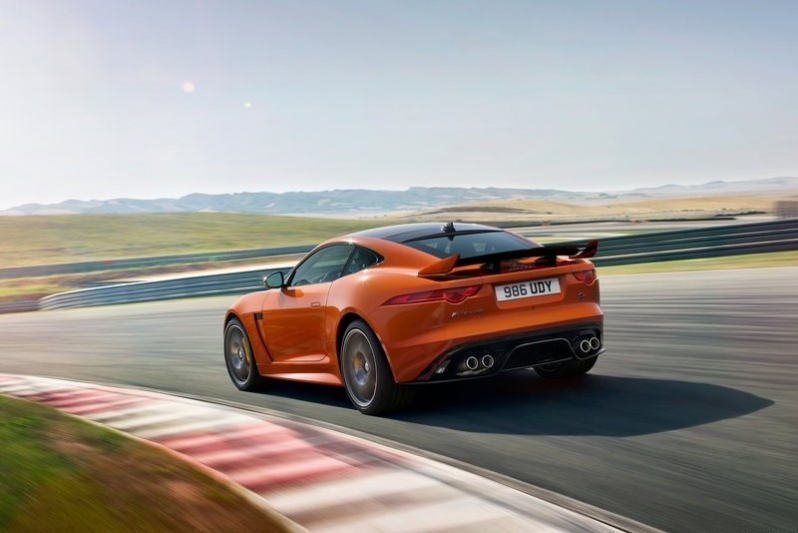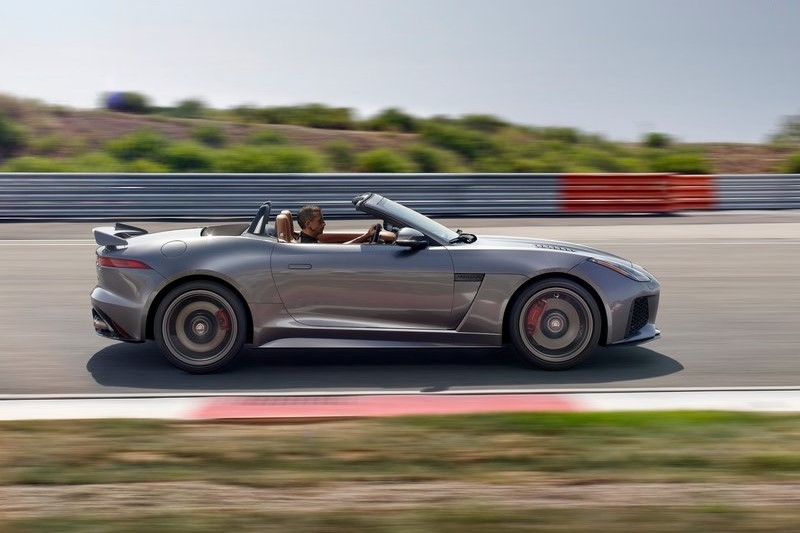Jaguar’s Special Vehicle Operations have comprehensively revised the F-Type to be faster and more focused; predictable results ensue.
Since its launch in 2013, Jaguar’s F-Type sports car has been available in several different variants, from its standard form with a supercharged V6, an “S” trim with more performance goodies and the all-conquering “R” model complete with a supercharged V8, which also gains all-wheel drive for this year. Now however, there’s a new top dog, the F-Type SVR. Brought to us by the same people who created the shockingly capable Range Rover Sport SVR, Jaguar’s offering will follow the same philosophy of combining top-tier performance with ease of use.
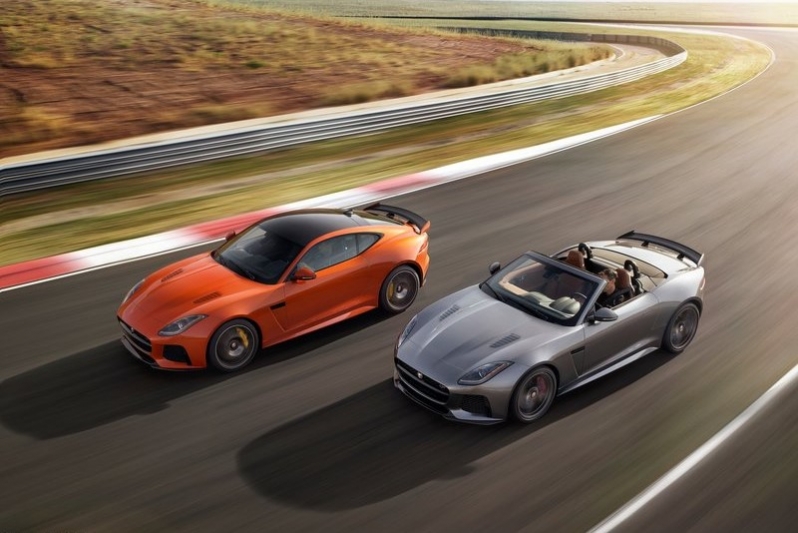
The F-Type SVR is based off the quickest variant, the “R”, and is available either as a coupe or convertible. To ensure there’s no mistaking the SVR’s status as as the fastest Jaguar on sale, an extended front bumper with larger intakes looks the business and improves cooling and reduce drag. The wider front end is complimented by a front splitter and vented fenders while a new rear undertray and spoiler help reduce lift and create a purposefully aggressive look. Redesigned forged 20 inch wheels and “SVR” engraved exhaust tips finish off the exterior.
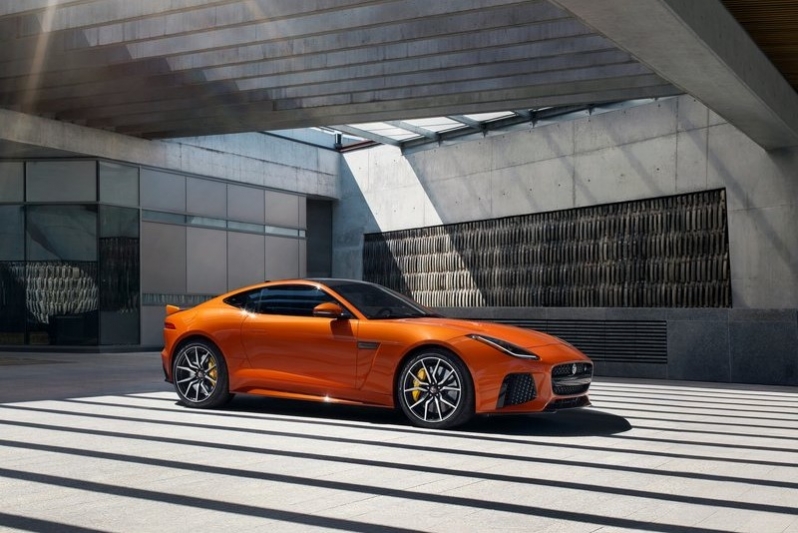
If the SVR’s exterior assaults the eyes it is the blown 5-liter V8 that grabs hold of your senses, burbling to the tune of 575 hp and 700 Nm of torque. An increase of 25 hp and 19 Nm comes courtesy of lessons learnt on the Project 7, sporting re-tuned engine management and a new titanium exhaust that Jaguar claims not only delivers a harder edged sound, but shaves weight by 16kg. Power goes through an 8-speed auto that now shifts faster, rocketing the SVR to 100 km/h in 3.5 seconds and onto a top speed of 322 km/h for the coupe, with the convertible hitting V-max 10 km/h lower.
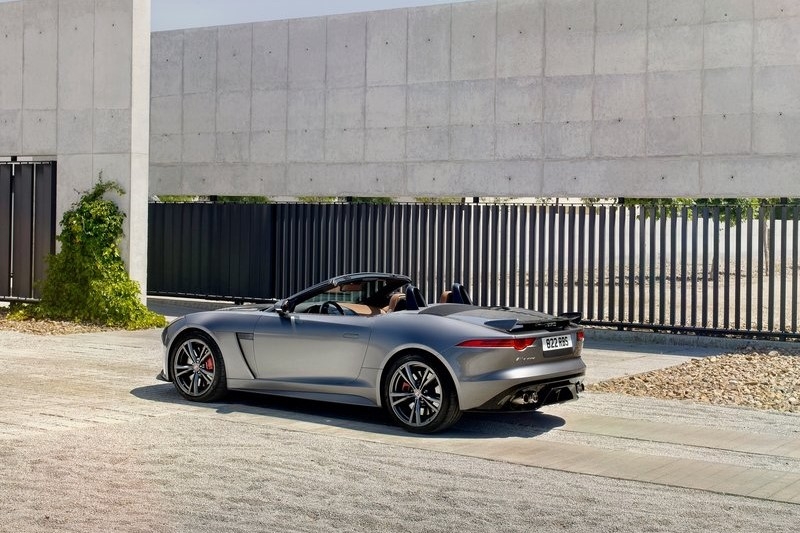
While raw power is something that Jaguars have never had a problem with, previous “R” models have been criticized for a lack of traction. Hence Special Vehicle Operations have spared no expense with the chassis. Tire size is up 10mm front and rear with a stiffer rear suspension knuckle to cope with the added grip, while the all-wheel drive and brake vectoring systems have been tuned to better cancel understeer. Revised shock absorbers and anti-roll bars keep the heavy body in check, though that mass can now be reduced by up to 50kg with options like a carbon roof.
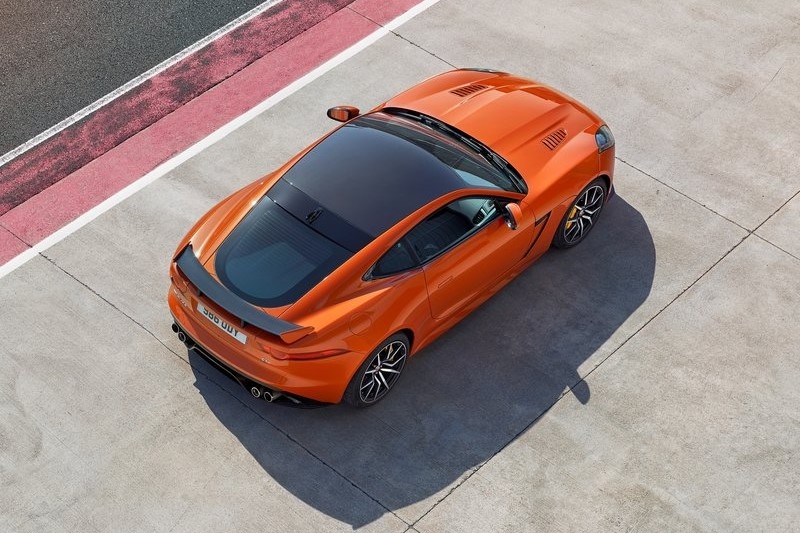
Though the SVR comes resplendent with added aerodynamic addendum and stiffer suspension components, Jaguar actually promises a better low speed ride and a more lavish interior, retaining all the amenities of the standard car while adding lozenge patterned stitching, 14-way power adjustable sport seats and extended shift paddles. Since launch the F-Type has been a hugely desirable car, combining an engaging drive with a refined demeanour. The SVR should build on what made the standard car so lusted after, and with pricing set to be pegged in between in between a Porsche 911 C4S and the flagship Turbo, the SVR could be an interesting left field choice.
